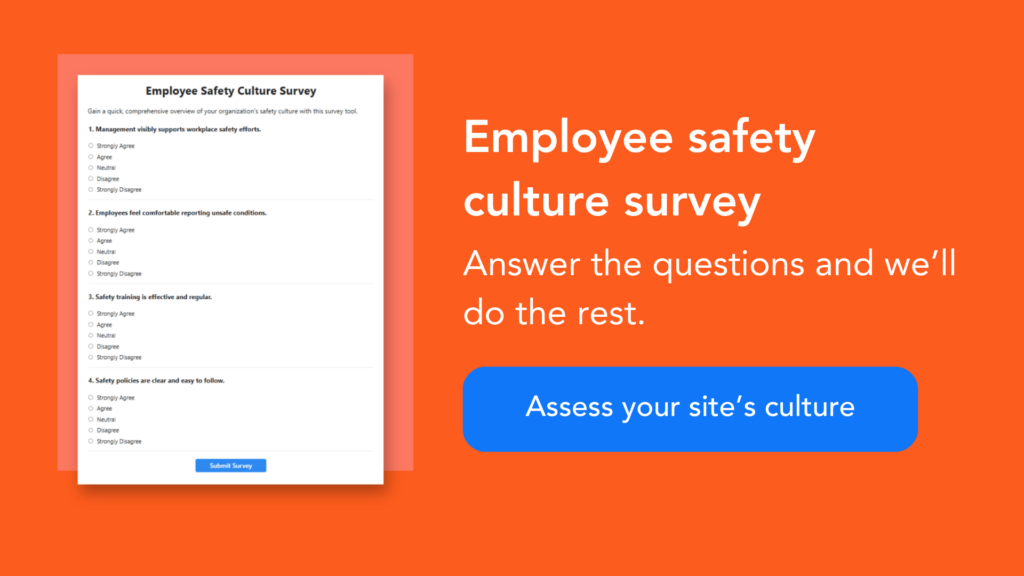I know firsthand the difference a proactive safety culture can make towards achieving EHS goals. Like any workplace initiative, it only comes from a well-rounded, intentional approach.
If you want your team to be take preventative action, you need to set the standard. Luckily, the best ways to develop a proactive approach are habits you should already have. Take your EHS program to the next level by following these guidelines for creating a proactive safety culture.
Free template!
Use this template to take a culture survey and find out how your employees feel about safety.
Perform regular workplace inspections
One of the most effective ways to prevent workplace injuries and incidents is through regular
and thorough workplace inspections. Workplace safety inspections should be more than just
someone walking around with a clip board checking boxes.
They should also include listening to workers in the field about the hazards they face while working for your organization. Your workers are the single greatest source of valuable safety information. Make sure you create time and space to hear their concerns.
Prioritize quality communication
Communication is a necessary part of any successful safety program. You can utilize
communication as a tool to build a proactive safety program by ensuring your teams are talking
about safety on a regular basis.
One way to do this is by using toolbox talks or something similar at the start of a shift. Most companies have their supervisors and leaders present safety topics to the rest of the employees.
To increase buy-in, however, have employees, not leaders, spearhead these discussions. This reinforces the idea that safety is the responsibility of everyone, not just management.
Invest in comprehensive training
There are many trainings that regulatory agencies require. If you want to develop a proactive culture, then the required training should just be a starting point for you.
You should use the input you gain from your workplace inspections and communication with your employees to develop a customized training program that addresses the specific hazards in your workplace. Make sure to conduct safety training regularly.
Investigate near misses
Most organizations have processes in place to handle the fallout of an injury. When this is the only system in place, however, you have a reactive safety culture.
One tool in developing a proactive safety culture that is often overlooked is having a process in place to address near misses. A near miss occurs when there is an incident that does not result in injury or property damage but could have.
OSHA recognizes the importance of identifying and addressing near misses. You can use its near miss reporting policy as a template for creating your own. Make sure that you keep documentation of your near misses so you can use it for future investigations.
Adopt a non-punitive approach
Another key element for developing a proactive safety program is ensuring that your employees aren’t punished for raising safety questions and concerns.
Undoubtedly, you should hold employees accountable when they don’t follow safety policies and procedures. But you should also make It clear that they will not get in trouble or be treated differently for voicing their worries.
If you struggle to get employees to come forward, then it might be a good idea to consider rewarding people who bring forth legitimate safety concerns.
Pursue continuous improvement
Lastly, if you hope to have a proactive safety program at your organization, then you must continually evaluate and improve your safety program. Pursuing continuous improvement opportunities is an easy way to keep safety in the front of your team’s mind.
Use action tracking software to track your progress on improvement projects and to ensure they’re completed. And build continuous improvement into your organization’s existing planning and review cycles for the best chance of success.
Other posts you might like…
No posts



